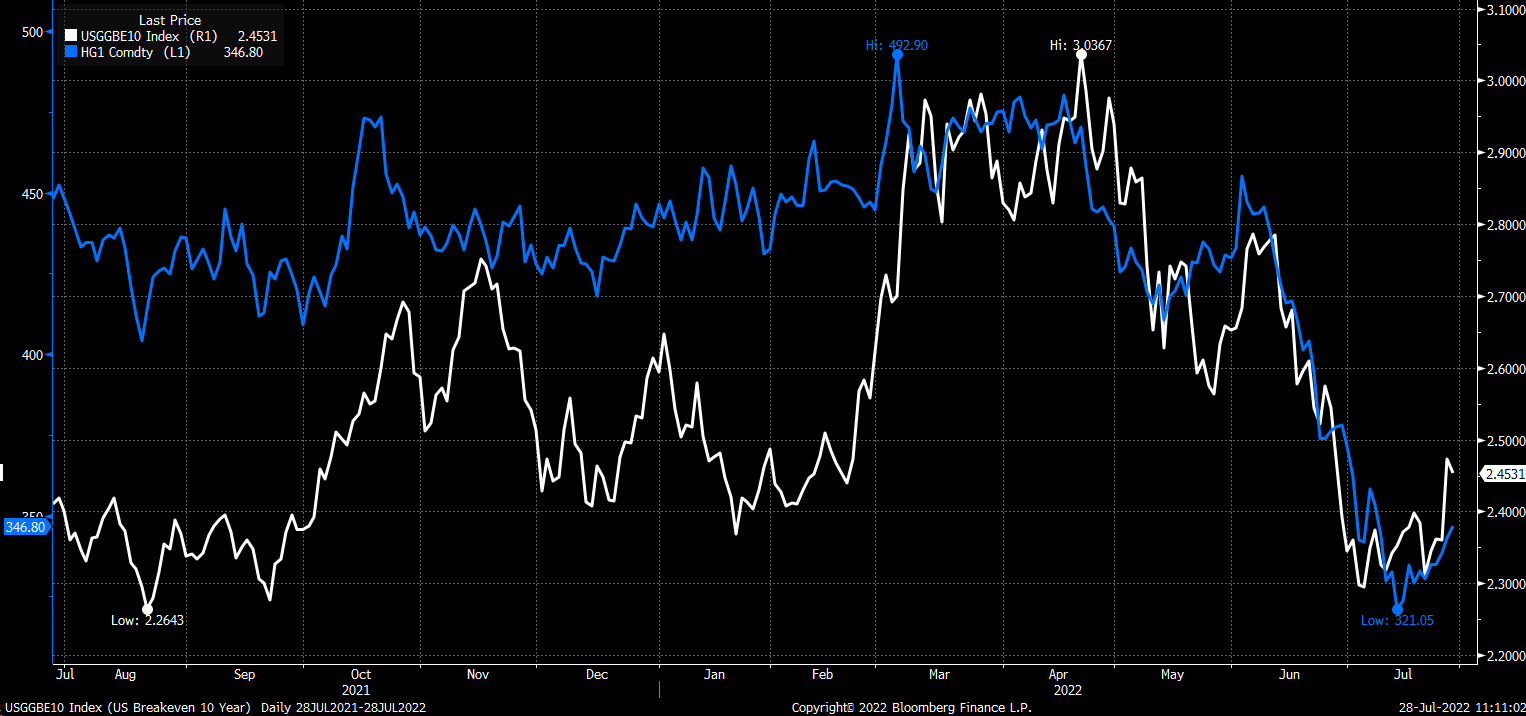The markets may be entering a vicious feedback loop that could prove self-defeating. In recent weeks, expectations of an economic slowdown have led many commodities to decline, leading inflation expectations to fall, resulting in some investors believing a dovish Fed pivot is coming.
As a result, rates have moved lower, and the dollar has stalled, lifting equity prices.
Of course, as the dollar falls, commodities like oil and copper are likely to rally, which will send inflation expectations higher, and in turn, begin to worry the markets that the Fed doesn't have inflation under control, pushing yields and the dollar higher, and sinking stocks.

A Loop
One can see how difficult and self-fulfilling a situation this can become. It will not make the Fed's job easier in the process either. Because just when the Fed thinks it has everything under control, the markets will sense the Fed may be about to pull back, and the whole cycle can start again.
For example, look at what has happened recently in copper, which has plunged due to fears of a macroeconomic slowdown. The metal has fallen from around $4.80 back to $3.20. That resulted in breakeven inflation rates dropping sharply, which has helped push real yields and nominal yields lower. The signal from falling real rates has forced equity prices higher while financial conditions have eased.

Starting All Over Again
However, investors have started to believe a dovish Fed pivot is coming due to these weakening signals in the macroeconomy. Investors have tried to front-run the potential for the Fed to begin cutting rates early next year. Whether this is correct is not the point; the market believes this may happen. This has started pushing copper prices higher again, and now even the break-even inflation rates have turned higher again. Does this mean we are once again going to find ourselves back in a place in 3 or 4 weeks where the market is fearing that the Fed doesn't have control over inflation and the Fed's dovish pivot is back to a hawkish one?
This creates a feedback loop that could go on for some time as the market begins to figure out what is taking place in the macro landscape—making greater and greater amounts of volatility in the equity prices.
There will need to be actual trends that show that commodities are falling on a sustainable basis over time and that inflation expectations are falling over time too. Until that happens, the market will continue to see substantial price fluctuations as it tries to plot a course for the path of the Fed and monetary policy, and the economy in general.
Disclaimer: The author currently does not own any of the securities mentioned in this article.
